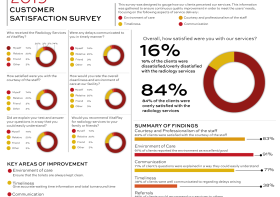A/B Testing for Marketing Optimization

In today’s fast-paced digital world, companies rely heavily on effective marketing strategies to drive customer engagement and boost sales. A/B testing has emerged as a powerful tool for marketing professionals to optimize their campaigns, refine their messaging, and achieve better results. By testing and comparing variations of ads, landing pages, call-to-actions, and more, companies can make data-driven decisions that significantly impact their overall marketing performance.
What is A/B Testing?
A/B testing, also known as split testing, is a method used to compare two versions of a webpage or marketing element to determine which one performs better. It involves dividing the target audience into two groups, exposing one group to the original version (A) and the other to a variant (B), and measuring their responses. By analyzing user behavior, such as click-through rates, conversion rates, or bounce rates, marketing professionals gain insights into which version performs more effectively.
The Process of A/B Testing
Implementing an effective A/B testing strategy involves several key steps:
Setting Clear Goals: Identify the specific marketing objective you want to improve through A/B testing. It could be increasing click-through rates, reducing bounce rates, improving conversion rates, or any other measurable goal.
Hypothesis Formation: Create a hypothesis about what changes you think will have the most positive impact. It could involve altering headlines, colors, layout, or any other element that might influence user behavior.
Design Variations: Develop two (or more) versions of the marketing element you want to test, making only one change at a time. These versions should be visually appealing, user-friendly, and focused on achieving the predefined goals.
Random Split: Randomly divide your audience into separate groups and assign each group to one version of the marketing element. Ensure that the groups are large enough to gather statistically significant results.
Collect Data: Measure the performance of each version by tracking relevant metrics such as click-through rates, engagement rates, or conversion rates. It is crucial to gather sufficient data over a reasonable time frame to ensure accurate conclusions.
Statistical Analysis: Use statistical methods to analyze the data and determine if the observed differences in performance are statistically significant. Tools like Google Analytics or dedicated A/B testing platforms can assist in this process.
Implement Changes: Once a winner is determined, implement the changes that produced the better results. It is essential to continuously monitor the impact of these changes and refine the marketing element for further optimization.
Best Practices for A/B Testing
To maximize the effectiveness of your A/B testing efforts, keep these best practices in mind:
Focus on One Variable: Test only one element at a time, as testing multiple variables simultaneously can lead to confusion and inconclusive results. By isolating one change, you can better assess its impact.
Test with Sample Size in Mind: Ensure your sample size is large enough to yield statistically meaningful results. Smaller sample sizes can introduce biases and render the test inconclusive.
Run Tests for Appropriate Durations: Run your tests for a sufficient duration to account for any variations that may occur due to time frames, holidays, or other factors that might influence user behavior.
Segment Your Audience: Different segments of your audience may react differently to marketing elements. By segmenting your audience and running tests specifically tailored to each segment, you can achieve more precise and nuanced insights.
Document and Learn: Keep a record of your tests, outcomes, and learnings. This documentation can serve as a valuable reference for future campaigns and ensure the continuous improvement of your marketing efforts.
A/B Testing – Elevating Your Marketing Game
A/B testing empowers marketing professionals to make data-driven decisions and optimize their strategies for maximum impact. By continuously improving elements of their campaigns, they can not only enhance conversion rates and customer engagement but also gain a deeper understanding of their target audience‘s preferences.
Effective A/B testing involves setting clear goals, forming hypotheses, designing variations, collecting sufficient data, and implementing statistically significant changes. By following best practices, marketing teams can unlock the true potential of A/B testing and stay ahead of the curve in the competitive tech industry.

